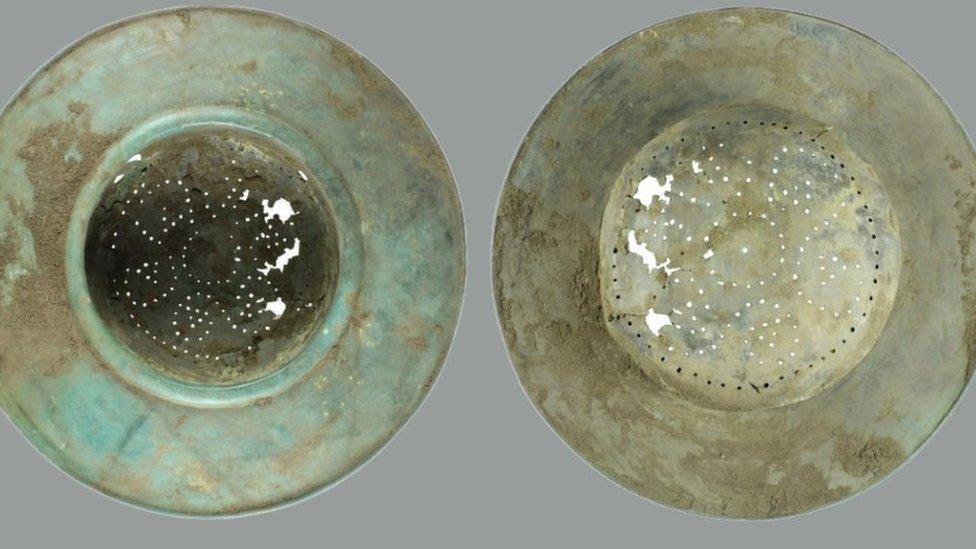American recreates bronze age necklace from Wiltshire Museum pictures
- Published
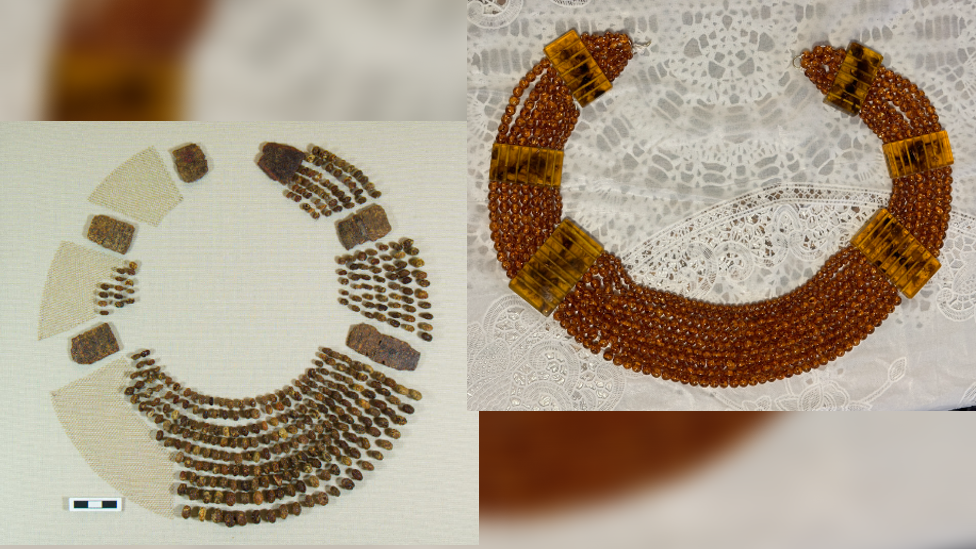
Caitlin Lee saw the pictures of the ancient necklace (left) on the Wiltshire Museum website
A woman who lives more than 4,000 miles away from Wiltshire has recreated an ancient necklace from the county.
The huge amber bronze age necklace, external is more than 3,500 years old and came from a burial eight miles from Stonehenge.
Caitlin Lee lives in Kansas in the United States and made the necklace using pictures from Wiltshire Museum.
The recreation has more than 850 beads copied from just over 300 which survive from the original necklace, once made of around 1,000 beads.
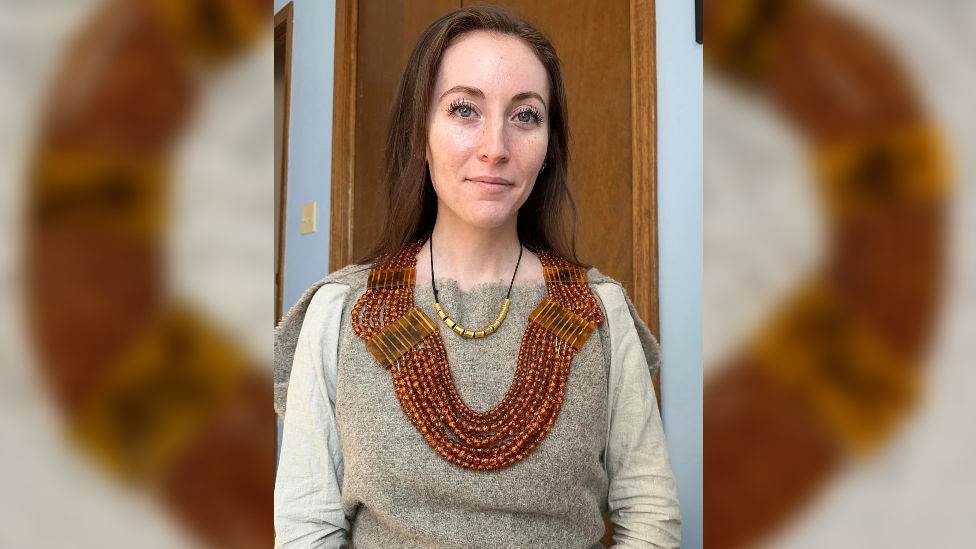
Seeing the necklace on Caitlin Lee shows how big it really is
Ms Lee has made replicas of ancient jewellery before and was searching for something made from amber to recreate for a class in her historical re-enactment group.
She found the necklace in Wiltshire Museum's, external collection, after first combing through collections at the British Museum. It comes from cremation remains found near the River Wylye at Upton Lovell.
"I saw the necklace, and I was just entranced at how incredible ancient jewellery makers were," she said.
Along with the necklace, gold was also found with woman's cremated remains.
The grave is part of an exhibit at Wiltshire Museum called Lady with the Amber Necklace.
Ms Lee said: "She must have been very, very special to have all that labour and love put into it."
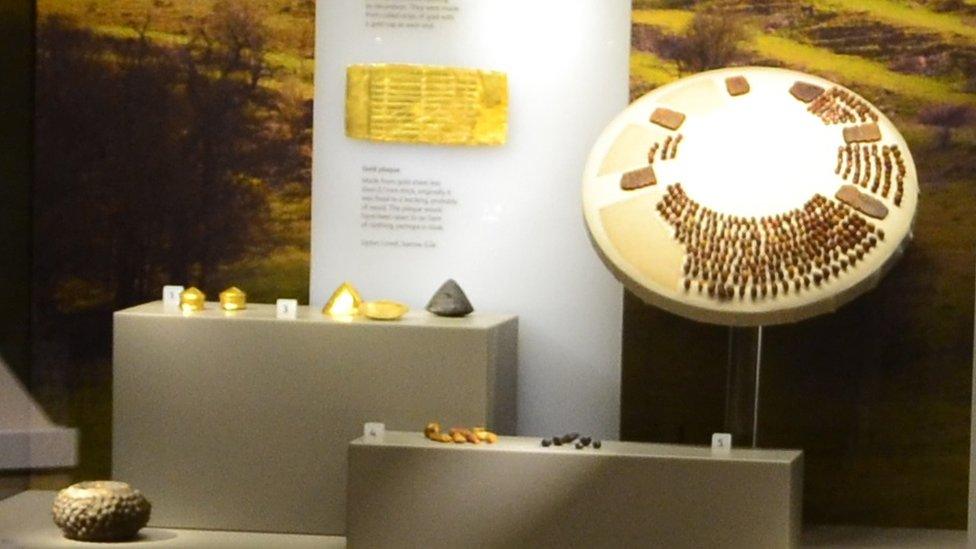
The exhibit at Wiltshire Museum shows what the woman was buried with, including the necklace and gold
Ms Lee likes to make things that are affordable to re-create, so making the new one from amber would have been too expensive.
She said instead she ordered 950 lookalike beads: "I have a little less than 1,000. As I was stringing, I tried to keep count. I stopped counting after 850."
Ms Lee had to string them all together, there were nine rows at the front and six further back.
She said it was the plates holding them together that were most complicated.
Other members of her craft-loving family also got involved, she was able to mimic the original's material using some of her mum's resin and a toothpick to swirl it to get an amber effect.
By studying the museum's pictures, she was able to see how many holes were put in and therefore how many strings of beads she needed. A large drill borrowed from her father helped her to accurately put the holes in.

Ms Lee made sections from epoxy resin, which took time to set, she then had to carefully drill holes into the thin pieces
At 68cm, Ms Lee's necklace is more than two feet long, but she said it is also light: "I don't even notice it on, less than a pound. If it was real amber, it would be very light as well."
She is unsure about calling it a direct replica because she has only ever seen the original in pictures.
"I would love to be able to go to the museum and see it myself and see dimensions. I kind of eyeballed it from the pictures online," she said.

This close-up of part of the original necklace shows how much work went into putting all the strings of beads together
It is suspected the original may have been made in Denmark or the Baltic Coast, with similar ones found as far away as Greece, suggesting long-distance contact at the time.
Ms Lee takes an interest in ancient British history and is a fan of Wiltshire.
"It's probably my favourite place in England and I'm very blessed to have been able to go a couple times and visit," she said.
She is part of the Society for Creative Anachronism, external which, like many re-enactment groups, has lots of members making lookalikes from the past.
"One of the reasons that I make replicas, or inspirations, of ancient jewellery is I like to think that whoever the artisan was would be happy to know that their work is still being celebrated thousands of years later," she explained.
Ms Lee's next challenge is to recreate some more items from the Lady with the Amber Necklace's grave.

Follow BBC West on Facebook, external, X, external and Instagram, external. Send your story ideas to: bristol@bbc.co.uk , external
Related topics
- Published20 June 2023

- Published9 March 2023
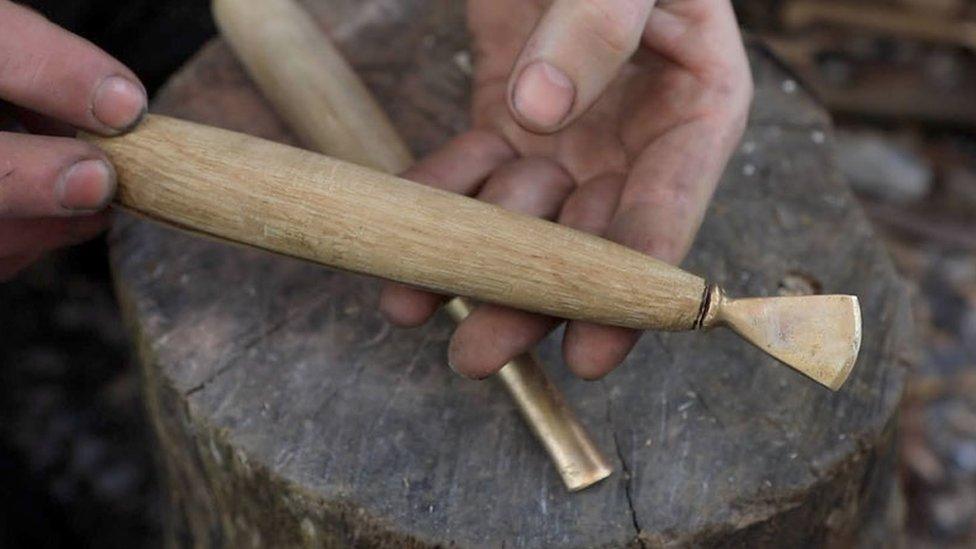
- Published14 November 2023
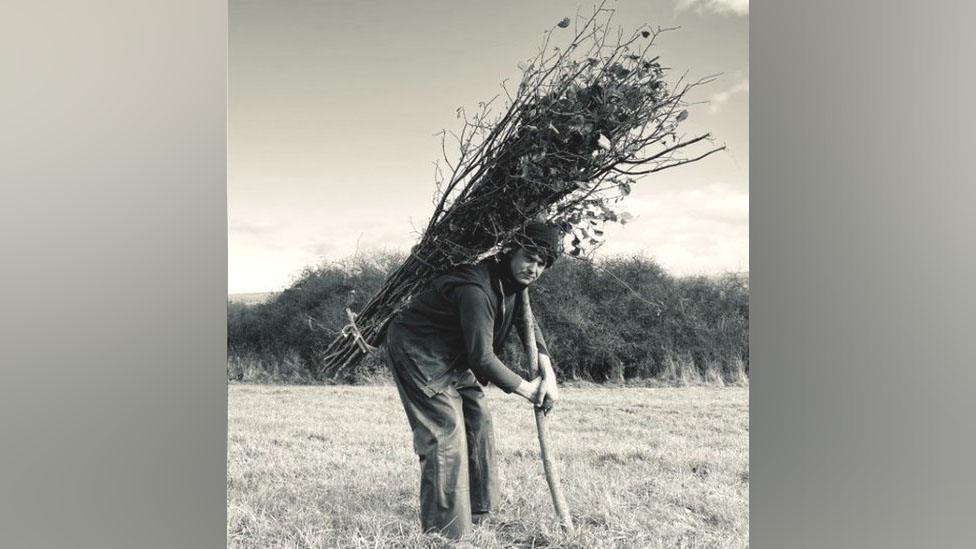
- Published3 April 2023
